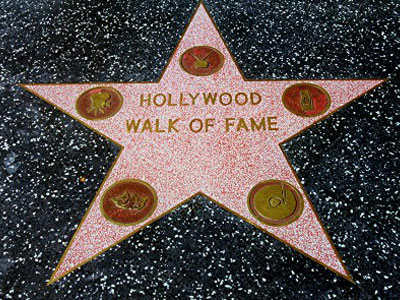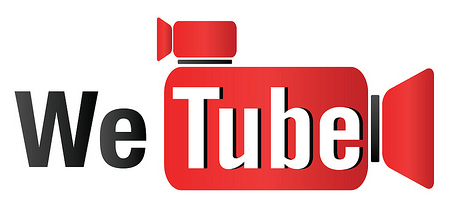Excerpts of audiovisual astronomy
 In the first systematic study about movie stardom and its heavy influence on early mass culture, Edgar Morin (1957) argues that during the golden studio-age Hollywood was able to dramatically change the ritual function of the mythical universe: by replacing traditional gods and heroes with god-like actors and stars, classical american cinema established a new emotional bridge between the fantastic world of dreams and real life. The advent of television immediately contrasted and later destroyed the whole star-system, for the simple reason that big and unreachable heavenly creatures were now quite available, intimate and small – our best friends and companions. This “domestication” of mediatic bodies underwent several stages during the last decades: from the flamboyant warholian’s mechanism of short-lasting fame (represented by reality-show partecipants and meteorockstars) to a growing appetite for sensationalism and thrill (fed with guinness records, freak shows and real-tv), temporary stars are massively falling all over the mediaplace – and it wouldn’t be strange to discover that this astonishing obsolescence is cunningly programmed. In the foreword to a recent italian reissue of Morin’s seminal book (1995), movie critic and philosopher Enrico Ghezzi updated this scenario with a couple of provocative but witty claims: nowadays the one and only star is the TV itself, and the secret to achieve a prolific status as an orbiting planet is to sharply inhabit the virtual place of the medium while intercepting its internal rules. Thus, fame becomes the ultimate abstract commodity in the mainstream flow: not even a performative or bodily feature, rather some sort of negotiable symbiosis with the transmitter.
In the first systematic study about movie stardom and its heavy influence on early mass culture, Edgar Morin (1957) argues that during the golden studio-age Hollywood was able to dramatically change the ritual function of the mythical universe: by replacing traditional gods and heroes with god-like actors and stars, classical american cinema established a new emotional bridge between the fantastic world of dreams and real life. The advent of television immediately contrasted and later destroyed the whole star-system, for the simple reason that big and unreachable heavenly creatures were now quite available, intimate and small – our best friends and companions. This “domestication” of mediatic bodies underwent several stages during the last decades: from the flamboyant warholian’s mechanism of short-lasting fame (represented by reality-show partecipants and meteorockstars) to a growing appetite for sensationalism and thrill (fed with guinness records, freak shows and real-tv), temporary stars are massively falling all over the mediaplace – and it wouldn’t be strange to discover that this astonishing obsolescence is cunningly programmed. In the foreword to a recent italian reissue of Morin’s seminal book (1995), movie critic and philosopher Enrico Ghezzi updated this scenario with a couple of provocative but witty claims: nowadays the one and only star is the TV itself, and the secret to achieve a prolific status as an orbiting planet is to sharply inhabit the virtual place of the medium while intercepting its internal rules. Thus, fame becomes the ultimate abstract commodity in the mainstream flow: not even a performative or bodily feature, rather some sort of negotiable symbiosis with the transmitter.
 With the advent of online video, the situation turns upside-down: totally free from time schedule, advertising breaks and material supports, video is almost a raw material – constantly shared, redistributed and handled among the public. Success, accordingly, becomes strictly dependent by a word-of-mouth proliferation of singular clips among the web population; the more the content/idea behind a video is considered relevant, the more spreadability is likely to occur. So, concept (the new fame parameter) is disseminated via some sort of interactive involvement, and visibility is strictly interconnected with the act of collective sharing. Take Youtube: launched in 2005, third most visited website on the Internet, its structure intrinsecally alters the unidiretional and glamorous drift of older audiovisual platforms – allowing users not only to upload original content but also to comment on other users’ videos. As a result, many of the most famous YouTube videos (with over ten millions of views) as well as the related so-called “YouTube celebrities” owe their dissemination to an unpredictable and amazing spiral of vernacul appropriation, a stimulating dialoguexchange of moving images between prosumers scattered all around the globe. As Jane Burgess (2008) puts it:
With the advent of online video, the situation turns upside-down: totally free from time schedule, advertising breaks and material supports, video is almost a raw material – constantly shared, redistributed and handled among the public. Success, accordingly, becomes strictly dependent by a word-of-mouth proliferation of singular clips among the web population; the more the content/idea behind a video is considered relevant, the more spreadability is likely to occur. So, concept (the new fame parameter) is disseminated via some sort of interactive involvement, and visibility is strictly interconnected with the act of collective sharing. Take Youtube: launched in 2005, third most visited website on the Internet, its structure intrinsecally alters the unidiretional and glamorous drift of older audiovisual platforms – allowing users not only to upload original content but also to comment on other users’ videos. As a result, many of the most famous YouTube videos (with over ten millions of views) as well as the related so-called “YouTube celebrities” owe their dissemination to an unpredictable and amazing spiral of vernacul appropriation, a stimulating dialoguexchange of moving images between prosumers scattered all around the globe. As Jane Burgess (2008) puts it:
There are also many highly popular YouTube videos that were originally contributed by ‘traditional media’ companies like television networks and major music labels (…) [but] the more interesting examples of ‘viral video’, while being quantitatively popular in this way, also attract active, participatory and creative engagement from other participants (…) It is only by looking at the creative activity that occurred around these videos that we can begin to understand just how important participation is to popularity.
So, the question arises: can YouTube (as well as other video-sharing websites) be classified as a social network? Are new strategies and interesting patterns emerging from this conversation through response video-posts? Is there a revolutionary, partially unconscious awareness of users toward the cinematic language? And finally, are media idols gonna be replaced by exhilarating culture jamming tactics?
Andrew Keen (2007) curtails by describing YouTube as “a portal of amateur videos”, while Lev Manovich (2008) states that “while the typical daily video or anime on YouTube may not be that special, enough are”, and is ready to conduct a deeper inquiry. As I write, the counter of the embedded video below shows over 12 millions views, making the author (an eccentric norwegian guy with a background in animation) the archetypal representative of the emerging web 2.0 trend discussed in this short and hasty essay.
Funny enough, the clip’s title explicitly reads “Amateur” and in the end credits an even more provocative statement is addressed to the viewer: “I can neither play the drums nor the piano”. Indeed, although we hear a simple but quite captivating song, the elements it’s composed of are visualized sound samples – singularly captured and assembled via regular videoediting. Here’s a powerful example of how expertise areas can mingle when conventions are fruitfully rearranged: after years of high-budget stereotyped videoclips (where look is everything and instruments tend to evaporate), music comes back to the core, but shown while being aseptically produced. The boy is alone, multiplying himself while having fun of its own solipsism; at the same time – as he declares in the video notes – he’s quoting a Michel Gondry intuition and building on top of it; following his example, dozens of other musicians or unusual vee-jays are now busy experimenting with similar patterns and uncommon sets of brand new restrictions (cfr. the video-song dogma of Jack Conte); and so on…
The firmament is messy, but fascinating; things move fast, we better be prepared to catch this transitory comets.
Sources:
Edgar Morin, “The stars”, Le Seuil, 1957 / “Le star”, Olivares, 1995
Jane Burgess, ‘All your chocolate rain are belong to us’? Viral video, YouTube and the dynamics of participatory culture in VideoVortex Reader, Responses to YouTube, Institute of Network Cultures, 2008
Andrew Keen, “The cult of the amateur”, Doubleday, 2007
Lev Manovich, “Software Takes Command: A Draft”, 2008 / downloadable HERE
Bonus Track:
I also managed to (unwittingly) create a small musical meme that generated several videoresponses; check it out if you like and, yes, feel free to contribute!